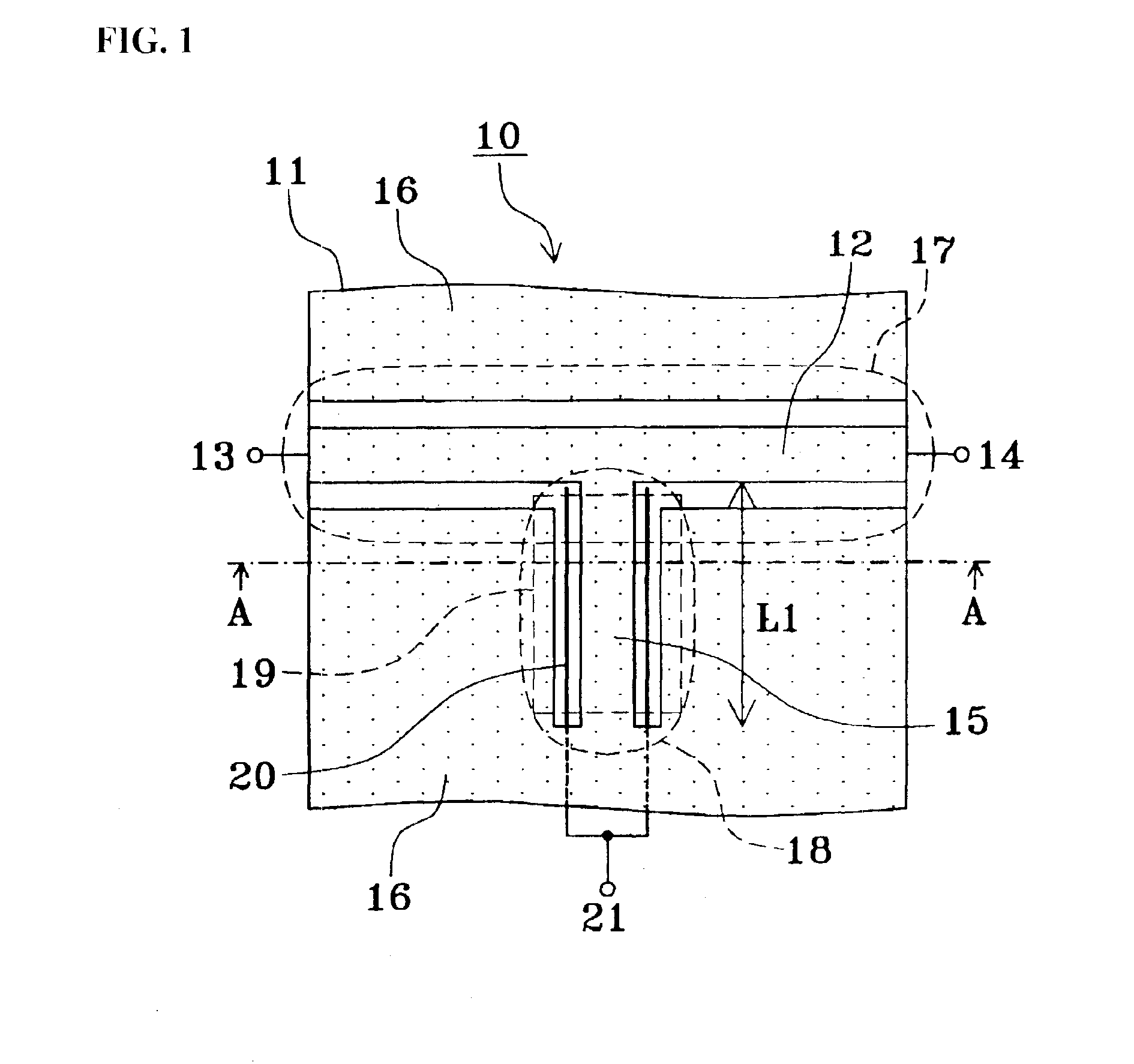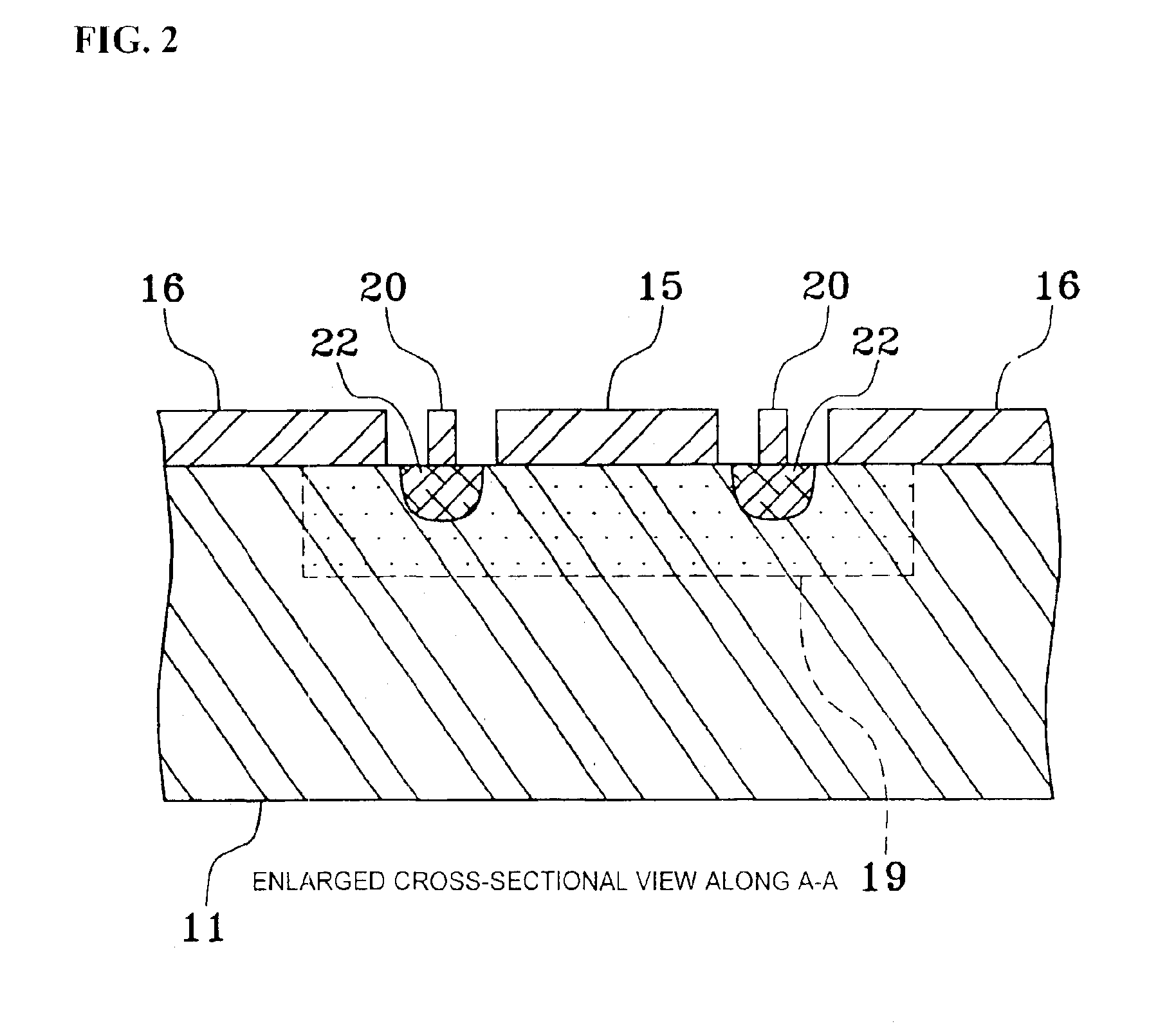High-frequency switch, and electronic device using the same
a high-frequency switch and electronic device technology, applied in the direction of coupling devices, electric devices, transistors, etc., can solve the problems of difficult use, high signal frequency, and limit the shape of the inductance device, so as to achieve low insertion loss and high signal cut-off properties
- Summary
- Abstract
- Description
- Claims
- Application Information
AI Technical Summary
Benefits of technology
Problems solved by technology
Method used
Image
Examples
Embodiment Construction
FIG. 1 is a plan view illustrating an embodiment of a high-frequency switch according to the present invention, and FIG. 2 is an enlarged view of a cross-section along line A—A of the high-frequency switch shown in FIG. 1.
In FIG. 1, a high-frequency switch 10 has a main line 17 and stub 18 formed of a coplanar wave guide formed on a semiconductor substrate 11. The main line 17 is formed of a main line electrode 12 and ground electrodes 16 formed on both sides thereof in the width direction, with one end and the other end being connected to terminals 13 and 14, respectively. The stub 18 is formed of a stub line electrode 15 and ground electrodes 16 formed on both sides thereof in the width direction, with one end connected to the main line 17, and the other end connected to the ground electrode 16 so as to be grounded. Or, in more precise terms, one end of the stub line electrode 15 of the stub 18 is connected to the side edge of the main line electrode 12 of the main line 17, and th...
PUM
 Login to View More
Login to View More Abstract
Description
Claims
Application Information
 Login to View More
Login to View More - R&D
- Intellectual Property
- Life Sciences
- Materials
- Tech Scout
- Unparalleled Data Quality
- Higher Quality Content
- 60% Fewer Hallucinations
Browse by: Latest US Patents, China's latest patents, Technical Efficacy Thesaurus, Application Domain, Technology Topic, Popular Technical Reports.
© 2025 PatSnap. All rights reserved.Legal|Privacy policy|Modern Slavery Act Transparency Statement|Sitemap|About US| Contact US: help@patsnap.com



